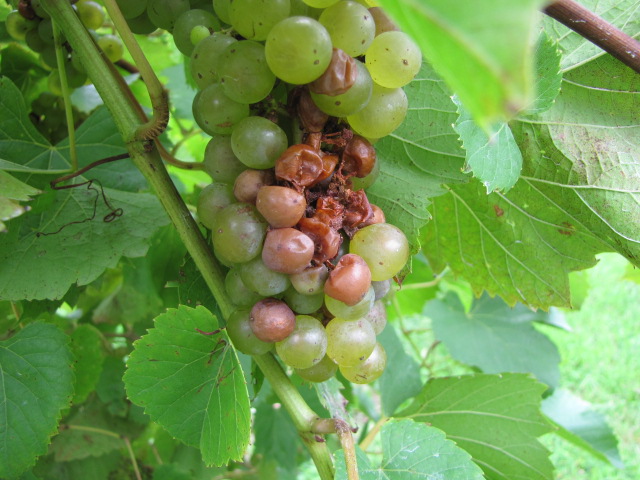Sour Rot of Grapes
Return to Diseases
Sour rot is caused by a combination of fungi, yeasts, bacteria, fruit fly larvae, and other organisms. Fruit symptoms include splitting, a sour vinegary smell, and oozing juice. Infections are initiated during wet weather when one or more berries in a cluster are injured; contaminated juice from infected berries spreads to others within the cluster. Black, brown, or green spores may be visible, and fruit fly larvae may be present. Cracked and damaged berries serve as a breeding ground for other microorganisms, which intensifies damage. Associated rots increase each year, especially in poorly managed vineyards; a dry season can stop or reduce disease progression.

Damaged berries caused by sour rot.
(Photo: John Strang, University of Kentucky)
Management:
- Practice proper sanitation (remove infected fruit).
- Increase air circulation to encourage drying of plant tissues (pruning, thinning, spacing, managing weeds).
- Manage diseases and insects, especially fruit flies.
